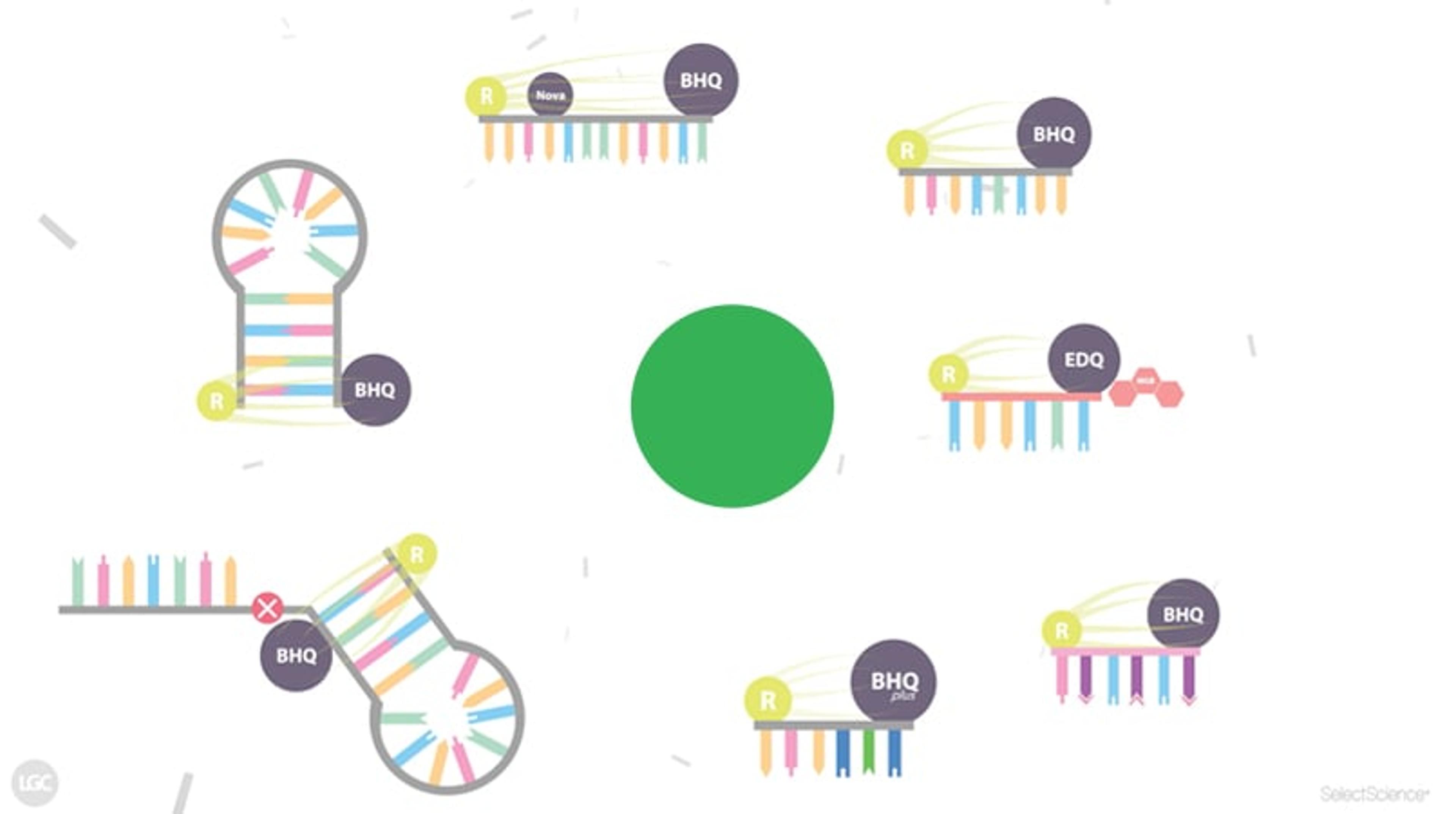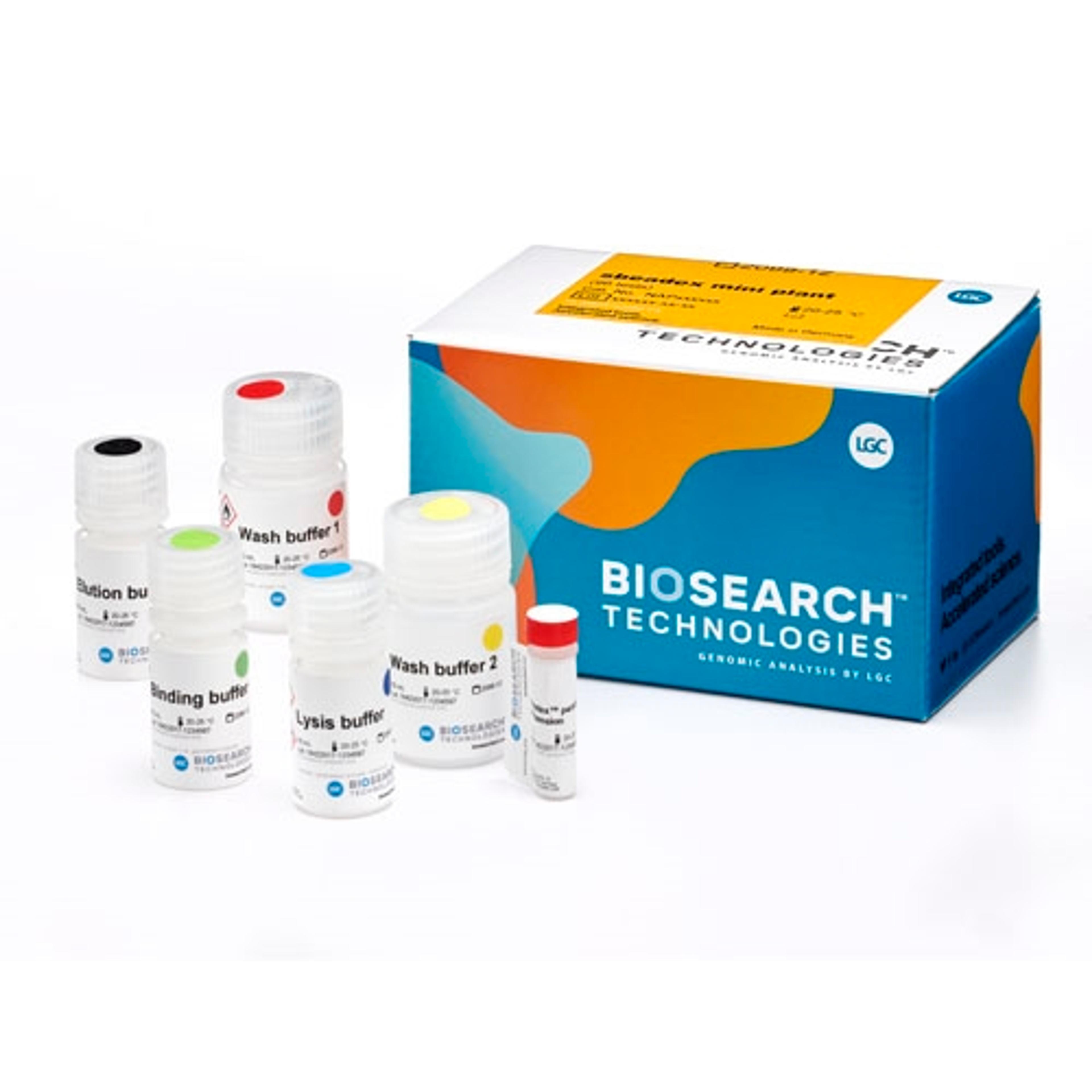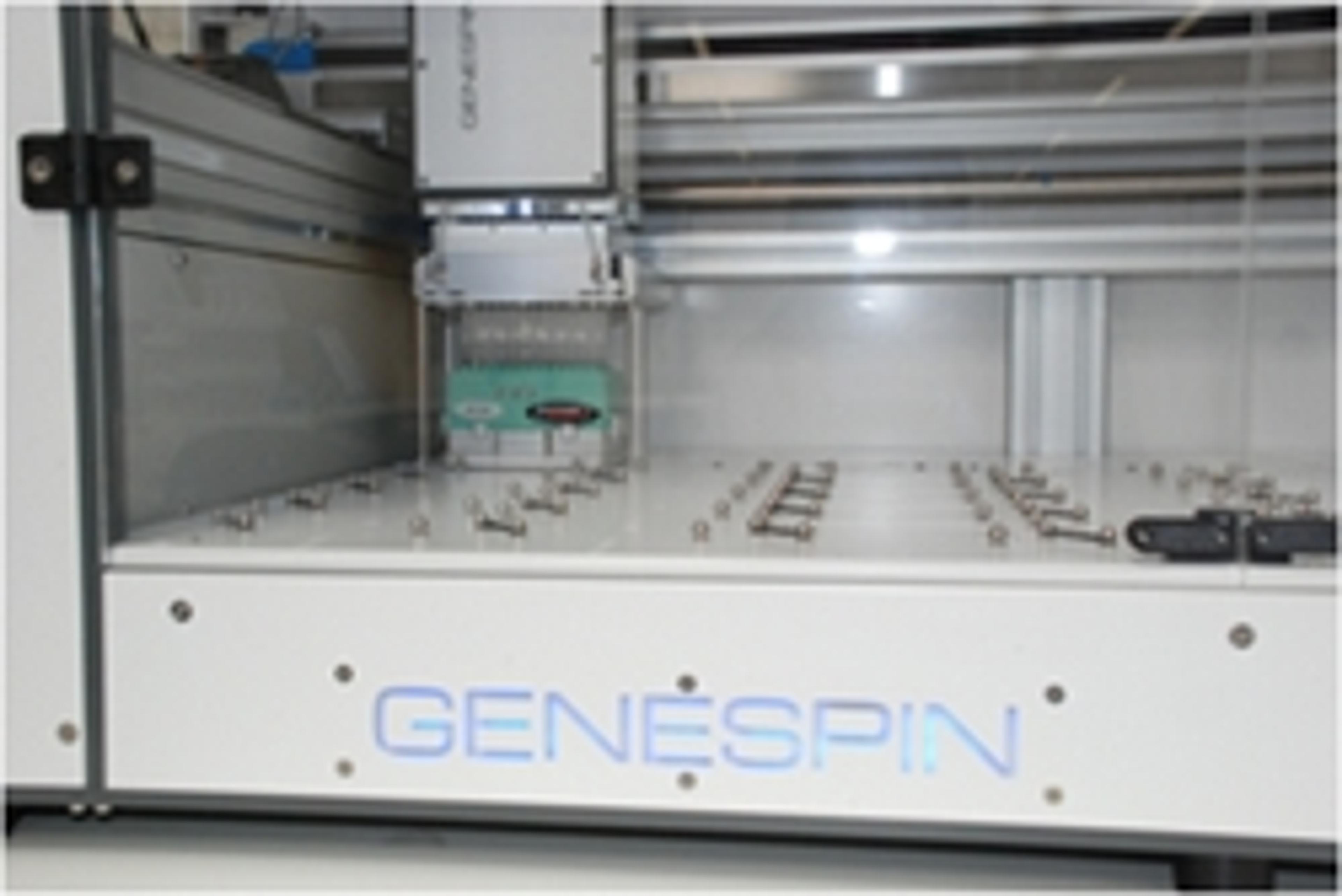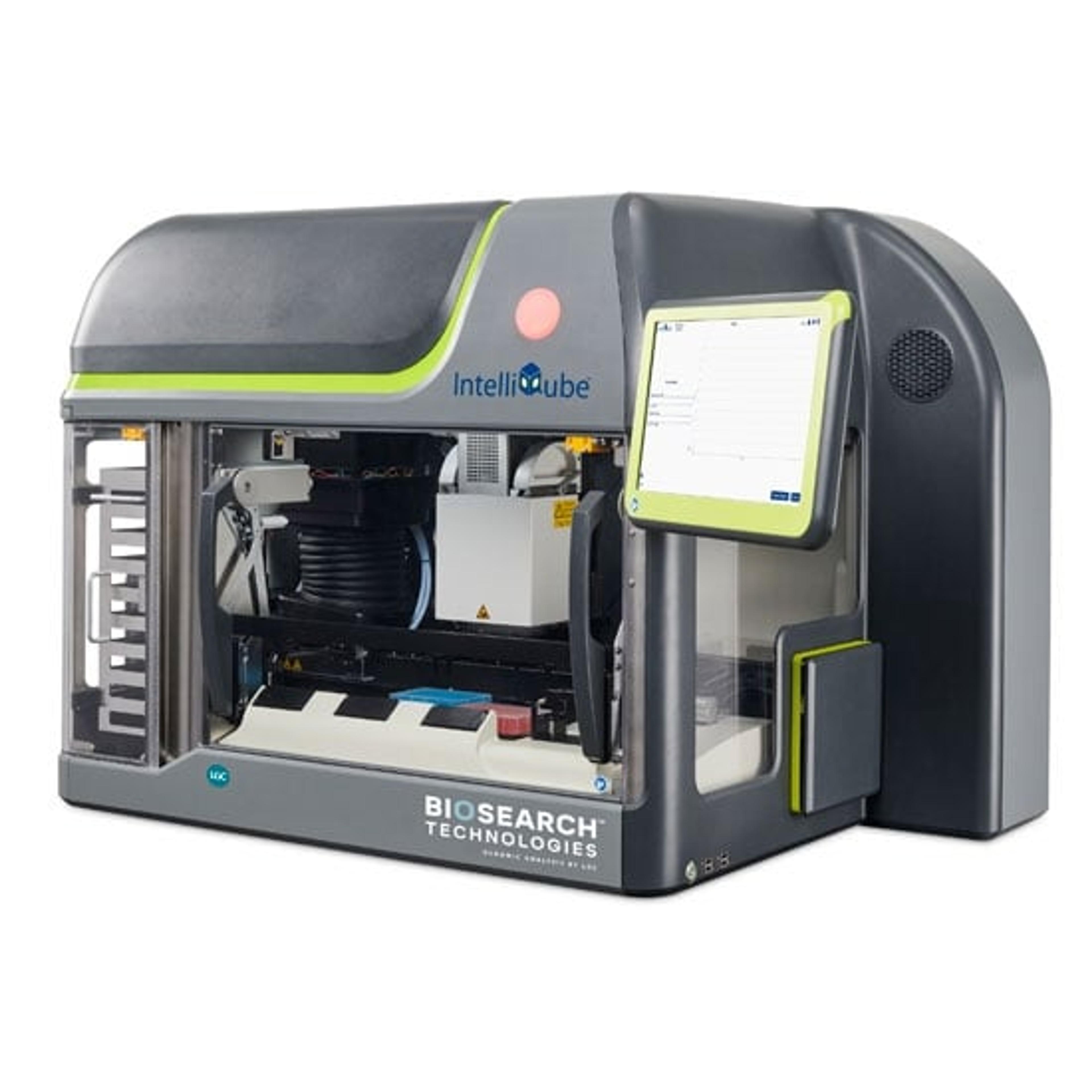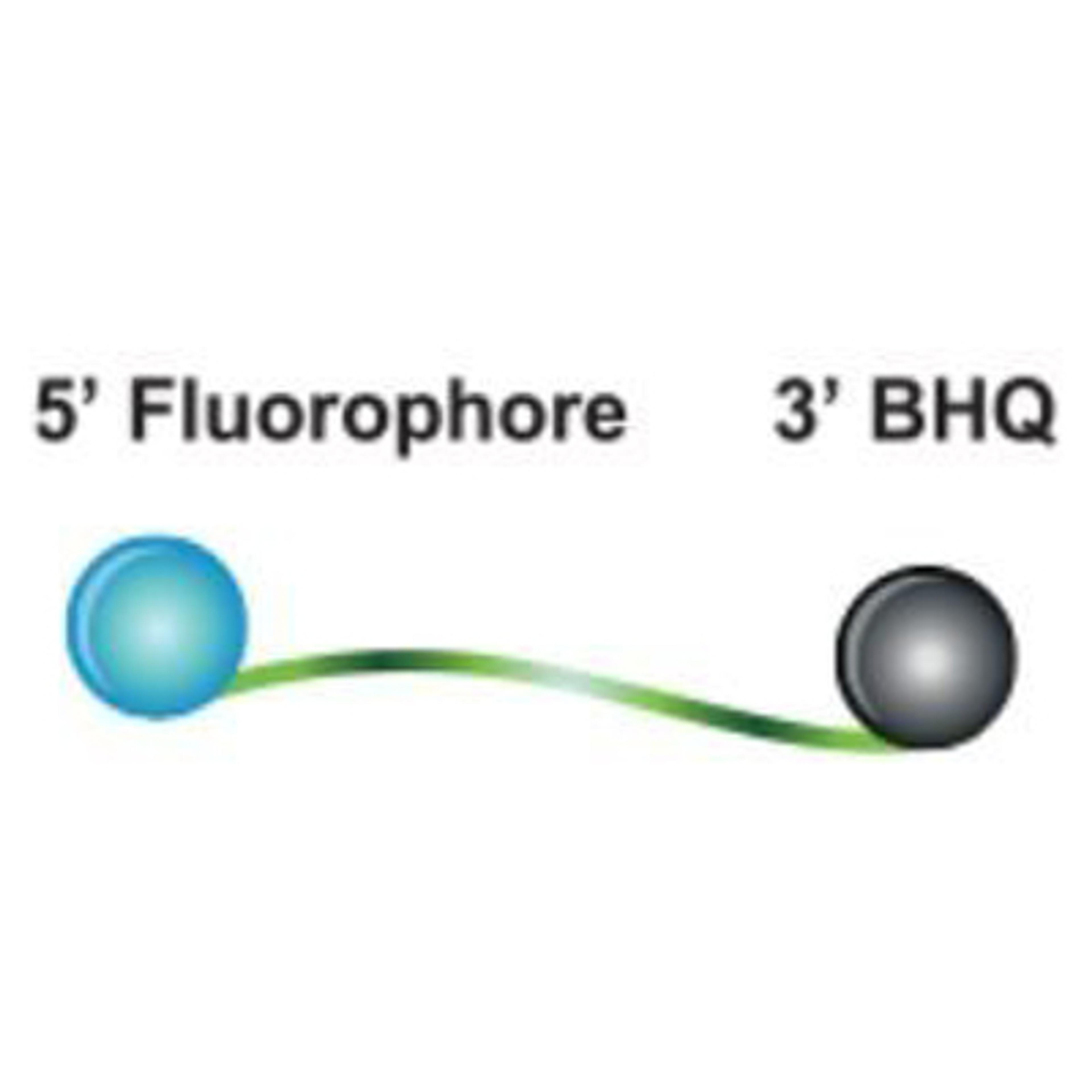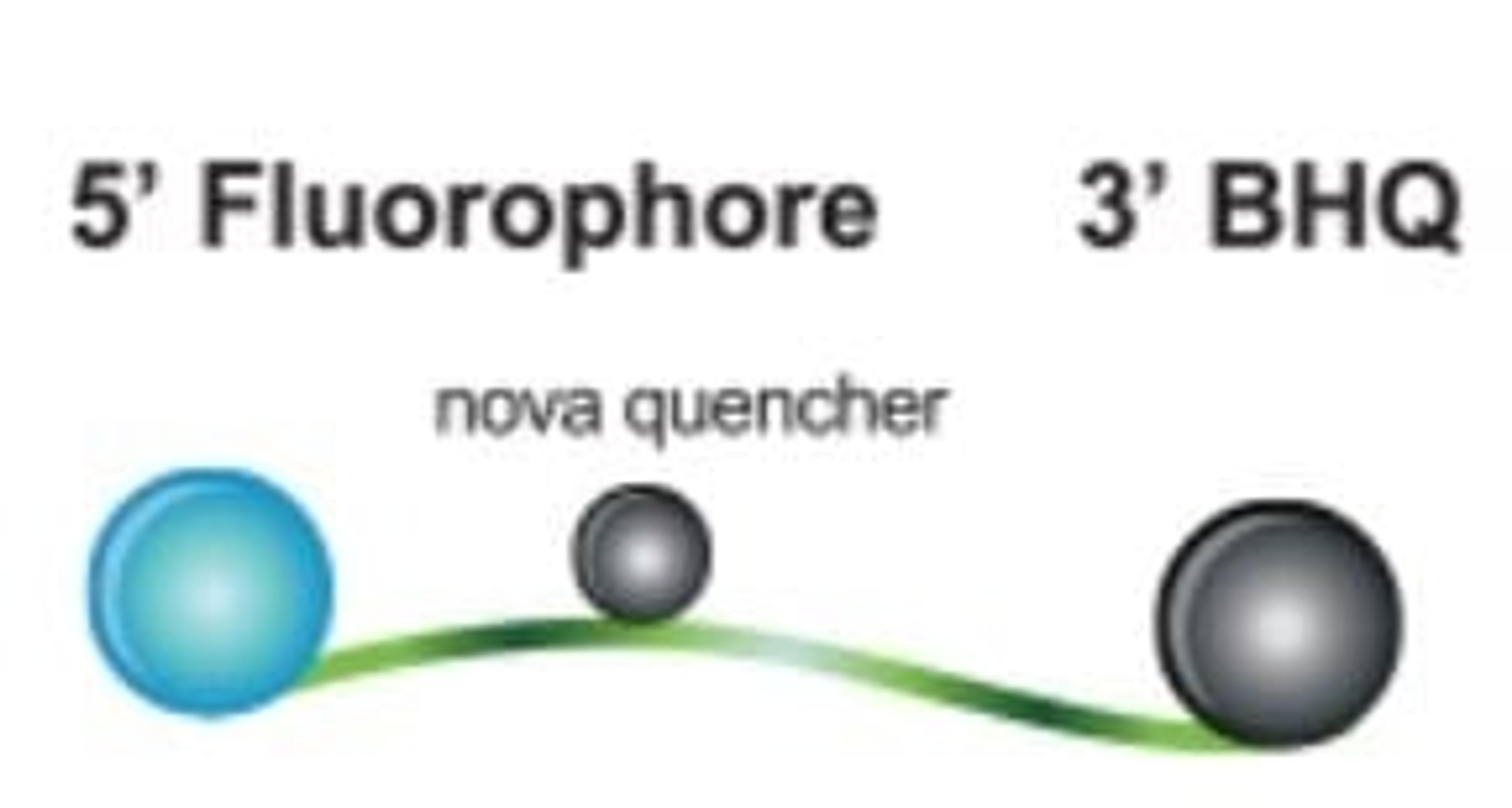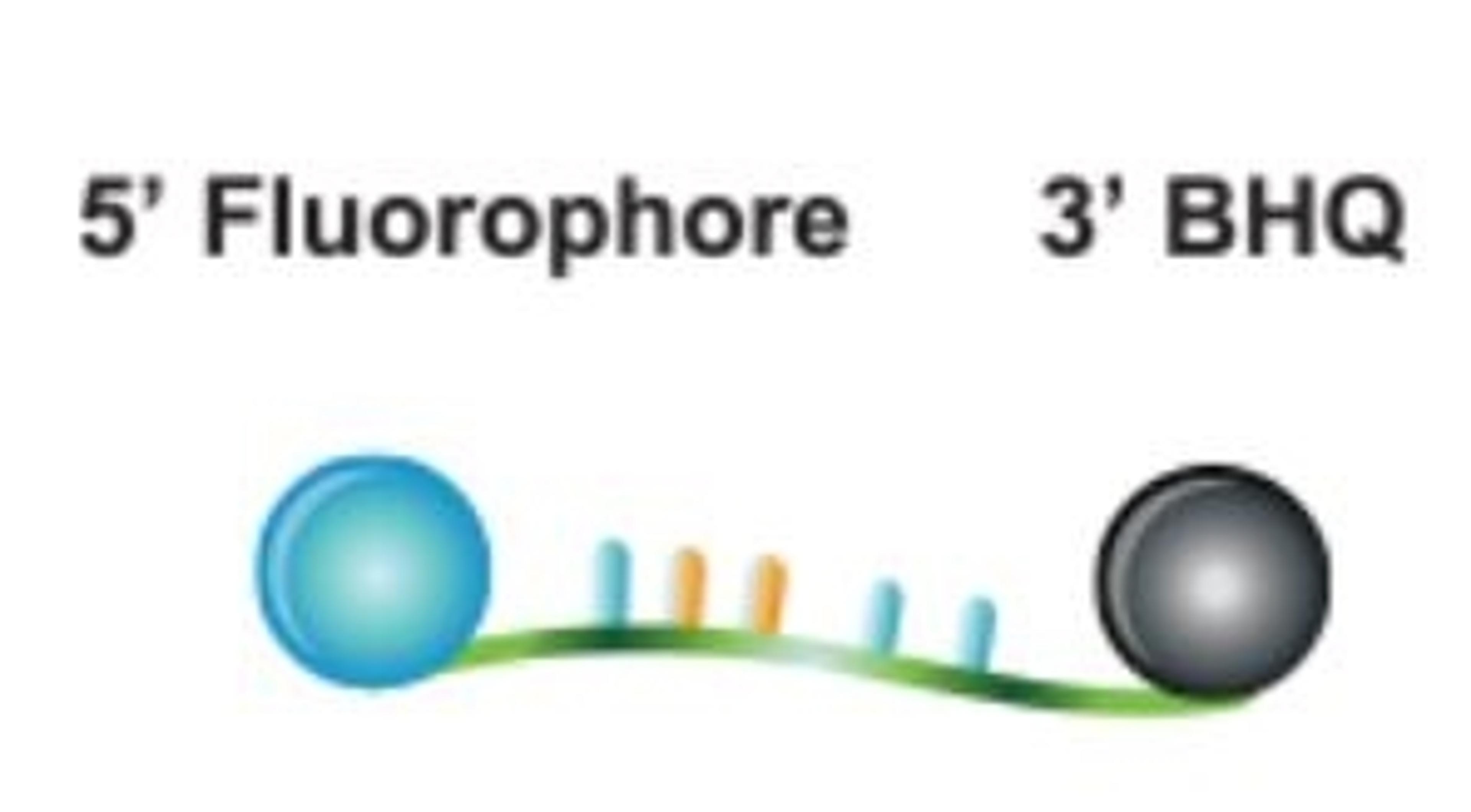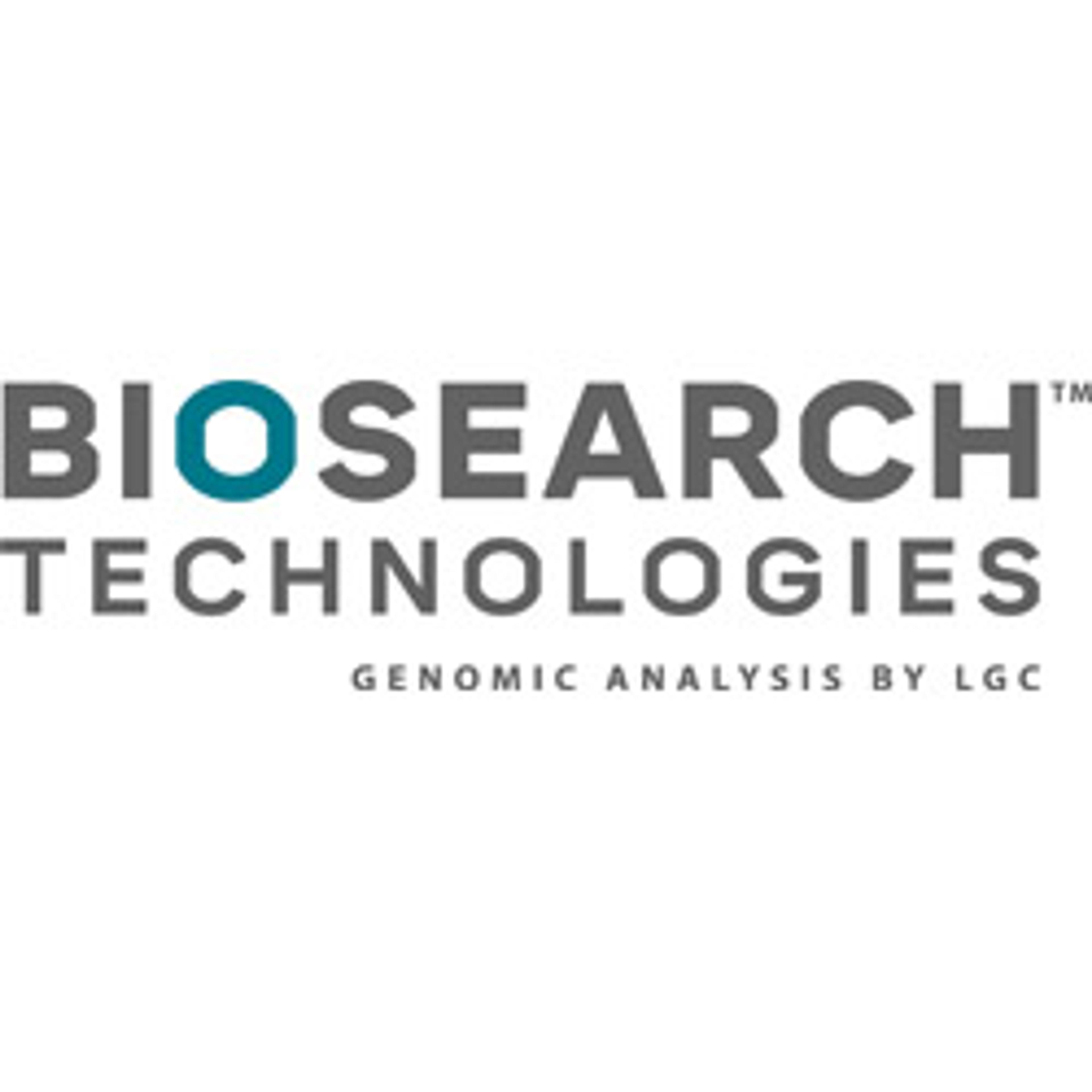Molecular Beacons
Molecular Beacons are a type dual-labeled FRET probes incorporating a quencher and a fluorophore reporter molecule. They differ from traditional dual-labeled probes, due to the incorporation of a short (~5 b.p.) complementary stem sequence at the 3' and 5' ends.
I trust LGC with my order.
Biomarker, FACS
I am very pleased with the product yield and purity. I usually receive the custom made product within two weeks after I ordered it, which is great.
Review Date: 31 Jul 2017 | LGC Biosearch Technologies
Molecular Beacons are a type dual-labeled FRET probes incorporating a quencher and a fluorophore reporter molecule. They differ from traditional dual-labeled probes, due to the incorporation of a short (~5 b.p.) complementary stem sequence at the 3' and 5' ends.
These complementary sequences hybridize to form a “stem-loop” structure which holds the reporter and quencher close together in space. This alternate conformation makes Molecular Beacons more discriminatory, allowing them to resolve different target sequences differing by a single nucleotide. Molecular Beacons also differ from traditional dual-labeled probes because they do not rely on probe hydrolysis from the 5' exonuclease activity of Taq polymerase to generate its fluorescence, therefore, a post-PCR melt curve is possible.
Just like standard Dual-labeled BHQ® probes it is possible to multiplex assays using Molecular Beacons. Multiplexing allows for the detection of several targets simultaneously using multiple spectrally resolved fluorescent probes.


